
An arrangement of objects, pictures, or numbers in columns and rows is called an array. In this article, you will learn how to use arrays to show the relationship between multiplication and division.
Key standard: Use multiplication and division within 100 to solve word problems in situations involving arrays. (3.OA.A.3)
Students in Grades 3 and up will learn that division can be thought of in two ways, partitioning and measurement. Although at this level students may not use these names, you can convey the meaning of both kinds of division so that they can have a better understanding of the division process. When you divide to find the number of objects in each group, the division is called fair sharing or partitioning. For example:
A farmer is filling baskets of apples. The farmer has 24 apples and 4 baskets. If she divides them equally, how many apples will she put in each basket?

When you divide to find the number of groups, the division is called measuring or repeated subtraction. You can keep subtracting 4 from 24 until you reach 0. Each 4 you subtract is a group or basket.
A farmer has 24 apples. She wants to sell them at 4 apples for $1. How many baskets of 4 can she fill?

Array Division
Manipulatives and visual aids are important when teaching multiplication and division. Students have used arrays to illustrate the multiplication process. Arrays can also illustrate division.
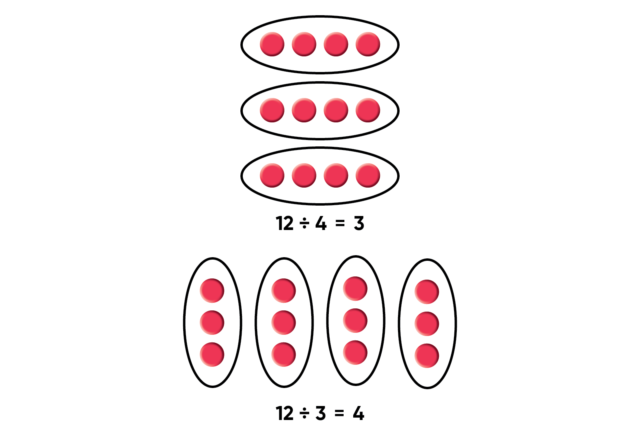
Because division is the inverse, or “opposite,” of multiplication, you can use arrays to help students understand how multiplication and division are related. If in multiplication we find the product of two factors, in division we find the missing factor if the other factor and the product are known.
In the multiplication model below, you multiply to find the number of counters in all. In the array division model, you divide to find the number of counters in each group. The same three numbers are used. The model shows that division “undoes” multiplication and multiplication “undoes” division. So when multiplying or dividing, students can use a fact from the inverse operation. For example, if students know that 4 × 5 = 20, they also know the related division fact 20 ÷ 4 = 5 or 20 ÷ 5 = 4. Students can also check their work by using the inverse operation.
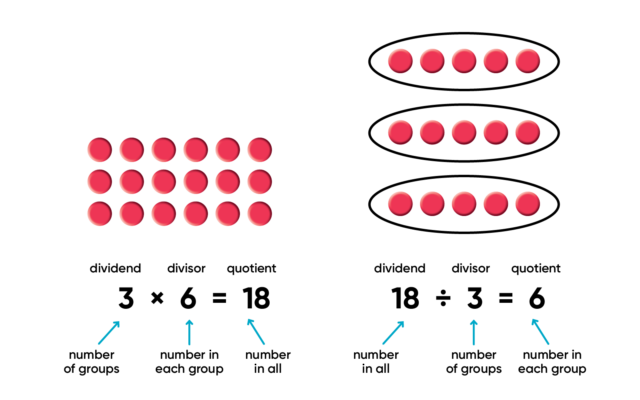
Relating Multiplication and Division
Notice that the numbers in multiplication and division sentences have special names. In multiplication, the numbers being multiplied are called factors; the result of the multiplication is called the product. In division, the number being divided is the dividend, the number that divides it is the divisor, and the result of the division is the quotient. Discuss the relationship of these numbers as you explain how multiplication and division are related.

There are other models your students can use to explore the relationship between multiplication and division. Expose your students to the different models and let students choose which model they find most helpful. Here is an example using counters to multiply and divide.
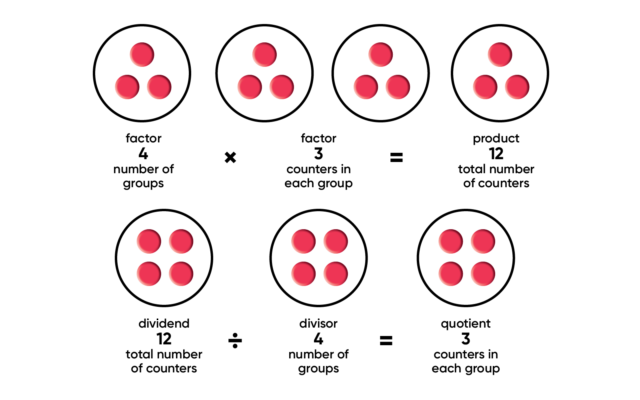
Here is an example using a number line.
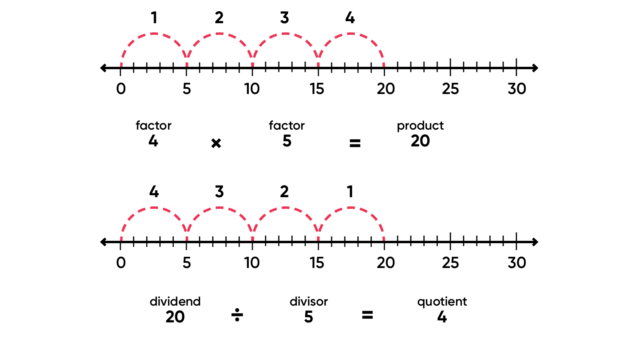
Another strategy your students may find helpful is using a related multiplication fact to divide. Here is an example.
18 ÷ 6 = ?
Think: 6 × ? = 18
Six times what number is 18?
6 × 3 = 18,
so 18 ÷ 6 = 3.
Dividing with 0 and 1
When students understand the concept of division, they can proceed to explore the rules for dividing with 0 and 1. Lead students to discover the rules themselves by having them use counters to model the division. A few examples follow.
When any number (except 0) is divided by itself, the quotient is 1.
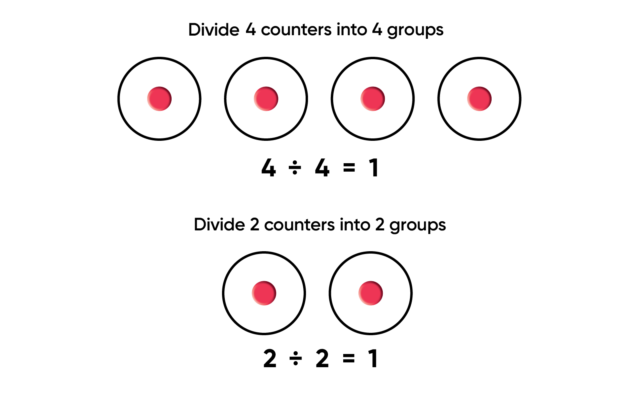
When any number is divided by 1, the quotient is that number.

When 0 is divided by any number (except 0), the quotient is 0.

Students may be curious what happens if they divide by 0. Explain that it is not an easy concept, and even professional mathematicians struggle to explain it! One strategy to show why it is not possible is to have students try to divide any number into groups of zero. No matter how many groups you make, it doesn't work.

Division in the Real World
Encourage students to think about the relationship between multiplication and division when they solve real-world problems. For example, they can use a related multiplication fact to find the unit cost of an item—for example, the cost of one baseball cap priced at 3 for $18.
$18 ÷ 3 = ?
Think: 3 × ? = $18
3 × $6 = $18,
so $18 ÷ 3 = $6.
The cost is $6 for one baseball cap.
***
Looking for more support with the question, "How are multiplication and division related?" Explore Math 180, our revolutionary approach to math intervention for Grades 5–12.
Get our free Math Intervention eBook today.

















